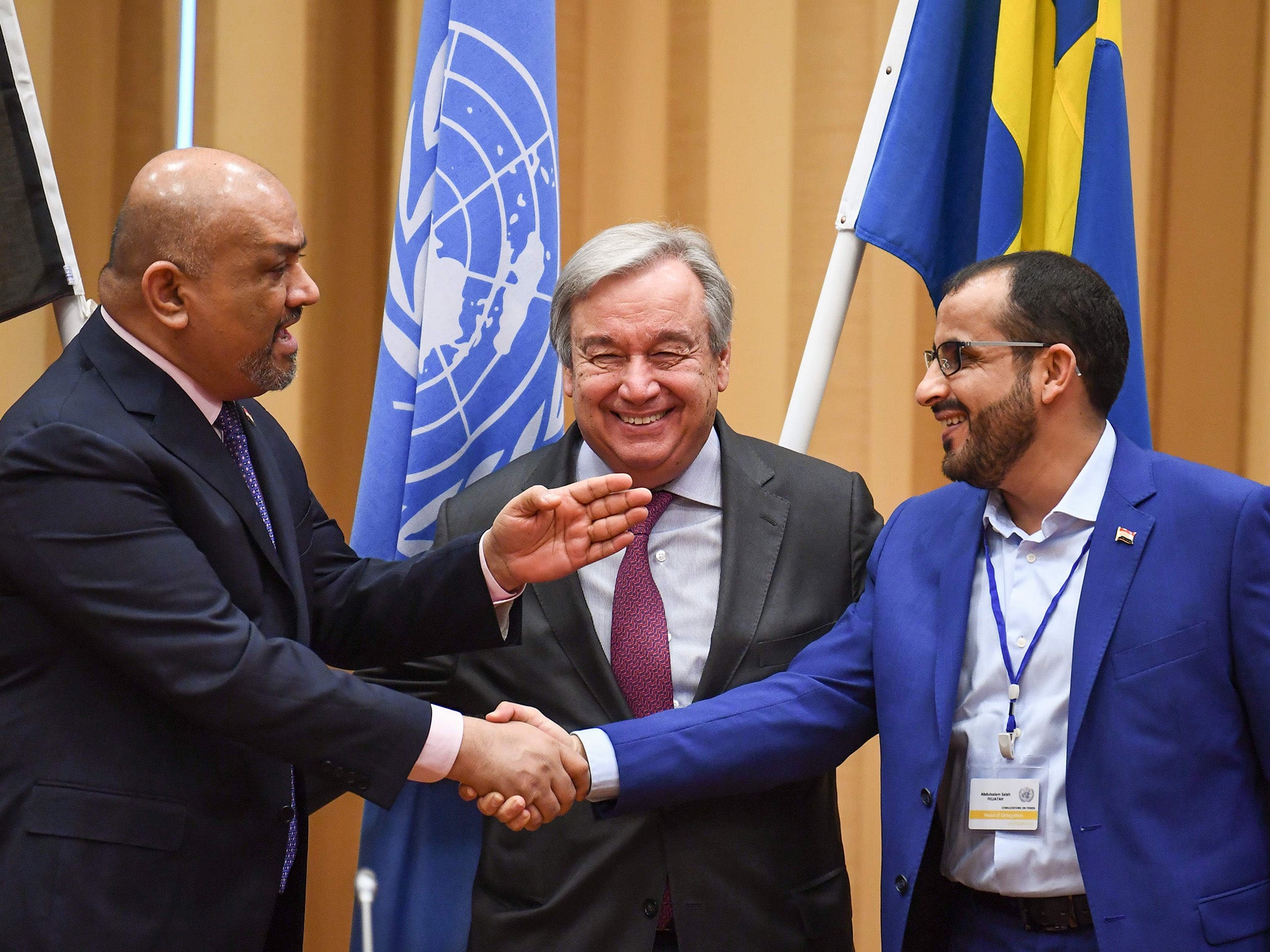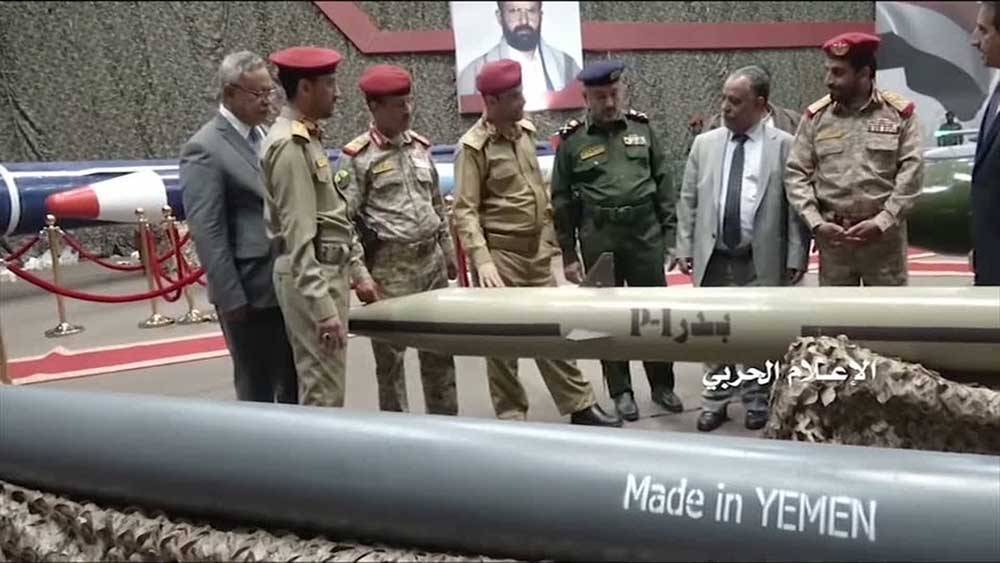In December 2018, the fighting Yemeni parties have conducted peace negotiations to pave the way to an end of the brutal war that has torn the country apart, especially with the military intervention of a Saudi-led coalition in favor of one of the parties. The negotiations did some change on the ground, yet in the art of war, the side that imposes its conditions must be the one that has the upper hand, and so far, that’s not the zone the Coalition is in.
The Yemeni military forces have targeted on the 17th of August ARAMCO’s Shaibah oil field and refineries, near the Saudi – Emirati borders, with 10 military drones, which makes it the second time the Yemenis target the strategic depth of the Saudis in the war that has started mid-March 2015.
Yemeni military spokesman, Yehya al Saree’, who goes by the command of the Yemeni government in Sanaa, said that on the morning of the 17th of August, the Yemeni aerial forces have launched its largest attack on Saudi Arabia since the start of the Saudi-led Coalition war on Yemen by targeting Shaibah oil field and refineries with 10 military drones. He promised “bigger and wider military operations on their (Saudis) vital facilities… the coming operations will be more hurtful for the enemy.”
Yemeni military spokesman, Yehya al Saree, announcing major attack on Saudi Arabia’s oil refinery in Shaibah
This peculiar development isn’t the first of its kind, if we’re speaking of an attack on Saudi Arabia’s vital oil facilities, where the Yemenis have targeted main oil pumps in central Saudi Arabia last May. It has caused some surges in oil prices as well as a change in the tone of Saudi officials and their allies inside Yemen – mainly in southern regions – towards the nature of the war they’re fighting against a Yemeni government located in Sanaa.
The Emirates, the Saudi’s most prominent regional allies in this war, has committed to withdraw its forces from Yemen after a series of attacks on its interests such as oil tankers in Dubai port, military drone operations on Abu Dhabi airport, and its military presence in Aden, south of Yemen. In addition to the international pressure from some governments and rights groups because of alleged war crimes committed against civilians in southern areas, such AP’s report on secret prisons where rape and torture is being practiced on opposers to the Emirati presence in the capitol of the Yemeni south, Aden, supervised by Emirati generals.
Report of Yemeni Army air force targeting Abu Dhabi Airport
The Emirati decision has indirectly led to sporadic clashes in Aden between Emirati-supported Southern Transition Council and the pro-Yemeni President Abed Rabbu Mansour Hadi forces, supported by the Saudis. This tension between both sides has shaken the trust among the members of the Coalition, especially with the different goals each party has from the war. For the Saudis, it’s about political control over the Yemenis, and the Emiratis are in it for the ports, especially Aden, Socotra, and Houdeidah, which would act as a vital replacement for the strategic Dubai port considering recent developments in the Persian Gulf and the potential big rivalry that the Chinese-funder Pakistani Gwadar port would create. As for the Hadi government, it’s acting basically as the Saudi’s political puppet to enforce the latter’s control over the country that has always been directly related to the national security of kingdom; while the Transition Council is looking for independence and separation from the Northern part of Yemen, taking he country back to a time before the unification in 1990.
This turbulence, alongside that in the Northern front, would mostly lead the Saudis to one of two options:
- Conduct direct peace talks with the Sanaa government, especially the Houthis, alongside the revival of the agreements signed in Decemeber’s talks in Stockholm. This would pave the road to an end to the entire war and the sufferings of the millions of Yemenis whom are either displaced, suffering from famine, diseases, malnutrition, and injuries.
Even though the warring parties have signed several agreements that would be a starter in lasting peace process, yet, due to the direct and indirect intervention of many global players in the war, the agreements weren’t fully applied on ground, with the exception of the Houdeidah agreement where the clashes were halted and UN peace-keepers supervised the peace treaty there, in which lies the only port that’s an access for humanitarian aid to more than half of the country’s population.
It’s worth noting that there has been huge international pressure on Saudi Arabia and the UAE to stop the war from governments and International NGOs, and recently there has been a notable statement on the 20th of July by the Saudi Ambassador to the UN, Abdullah al-Muallimi, where he said that “we do not want war with Iran in Yemen or elsewhere… it is high time that the war in Yemen should end and the Houthis should accept UN resolution 2216 by ending their illegitimate occupation of power in Yemen.” This statement could serve as a beacon of light to end this catastrophic war.

Heads of both Yemeni delegations, Khaled al-Yamani (left) and Mohamad Abdul-Salam (right), shaking hands, with the presence of UN secretary general Antonion Guterres (center) at the closing of the Yemen peace talks in Stockholm (December 2018)
- The second option would be getting the upper hand in the war over the Sanaa forces and the Houthis, yet it’s easier said than done considering the recent balance-tipping developments, whether it be in Dale’ governorate in the south, just north of Aden, the capitol of the Saudis’ Yemeni allies; as well as, and most notably, the losses the Kingdom is suffering from at the border fronts, where the Saudis have lost several towns and around three cities, clashes going on near other cities, air fields like Abha and Khamis Mousheyt are being constantly hit by military drones and ballistic missiles, and border outposts are being taken over by a few men wearing nothing but slippers and a traditional Yemeni outfit, unlike the Saudi-led coalition which is fully equipped with body armor, night vision scopes, state of the art machine guns, and protected by formidable air and ground forces.
History has taught us that one the hardest battles that any army would fight is against a group that has no fear of death nor does it have anything to lose. The Yemenis have fought 6 wars in the past 30 years, unlike the Saudis, who have entered their first actual war.
In addition to that, the problem that lies in this expectation is that several of the key allies of the Saudis are taking a step back from supporting them, such as the US, France, and UK, after reports on war crimes and human rights abuses by Saudi-led coalition forces. Yet that doesn’t mean that these three elite nations aren’t getting paid in billions in return for weapons for the Saudis and Emiratis. Human rights aside, money still has the higher ground in the case of Yemen.
Nevertheless, the Houthis and their allies in Sanaa are still producing and improving their military arsenal to repel the Coalition’s attacks in the north, which has been a surprise to the Saudis and a heavy punch that they’re trying to cope with.

Sanaa-supported Yemen military generals standing in front of newly developed missiles’ replicas
In conclusion, the most reliable option here is a total cease-fire in all of Yemen, though it’s hard to practically impose on the warring sides due to the lack of trust between them, yet it will open a door for serious negotiations to put an end to the war, or, to say the least, apply the agreements that have been signed between them in Stockholm last December.







Freedom to Speak, Respectfully.